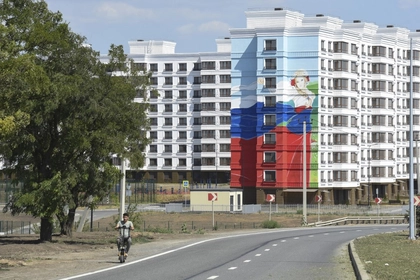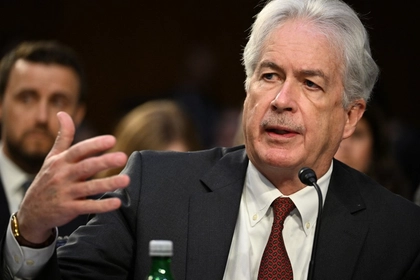- Russian reinforcements
Moscow is ransacking other frontline sectors for troops. It will probably be some time – weeks or even months – before its Kursk defenses are ready to counterattack.
After nearly two weeks of Ukrainian army operations inside Russian territory, Kremlin reports and Ukrainian frontline accounts confirm Russia is still struggling to organize a coherent defense of the Kursk region against Kyiv’s forces that still clearly hold the initiative.
JOIN US ON TELEGRAM
Follow our coverage of the war on the @Kyivpost_official.
Russian defenses appear centered on roads the Ukrainians might be most likely to use. Units not normally thrown into the front line, including “spetsnaz” special forces infantry or the Akhmat paramilitary police, were initially deployed in an attempt to stop maneuvering Ukrainian units.
A week into the offensive, the Kremlin, according to open sources, ordered at least a half-dozen, lightly armed volunteer and irregular infantry units – normally used for patrolling or rear area security in the Donetsk region to fight Ukrainian armored units – into Kursk Region as well.
According to open-source intelligence (OSINT) reports, the availability of regular Russian troops equipped with heavy weapons including artillery and tanks is limited.
Reports have confirmed the presence of elements of the 810th Naval Infantry Brigade and 272nd Motor Rifle Regiment. Both of these units have suffered repeated heavy losses over the past two and a half years and are now largely made up of poorly trained replacements.

Ukraine’s Usyk Beats Fury in Heavyweight Championship Rematch
It seems likely that they will mostly be used to man strong points to block further Ukrainian advances rather than for counterattacks.
Unconfirmed reports say that Moscow’s generals have ordered as many as two paratrooper regiments from the Kherson sector, two motor rifle regiments from the Zaporizhzhia sector, a motor rifle regiment from the Kharkiv sector, and hundreds of conscripts from Russia’s southern military district in the Caucasus to reinforce the Kursk region.
Kyiv isn’t saying anything official, but according to Russian sources, Ukraine has deployed as many as eight solidly-equipped combat brigades, supported by at least two heavy artillery brigades into the Kursk region. Kyiv Post has been able to confirm the presence of at least four brigades.
Even were all of these Russian forces en route to the Kursk region, to actually get there, complete with all their firepower, this would only represent rough parity with Ukraine’s deployments.
When Moscow’s reinforcements do arrive, the Aug. 12 orders issued directly by Russian President Vladimir Putin, will force Russian units in the Kursk sector to fight under a complicated and seemingly unwieldy command structure led by Russia’s Federal Security Service (FSB) to coordinate army operations, civilian institutions, and local police in a “counter-terror operation.”
The dispatch of Putin’s former security guard Alexander Dyumin to coordinate military actions may help, or, as often happens in Russia, it could degenerate into a turf war between the heads of service.
- Defensive positions
Russian defensive obstacles and defensive tactics that stopped Kyiv’s forces cold last year haven’t done very much this time around.
Russian forces have reportedly prepared lines of defense including minefields, anti-tank ditches, bunker and trench networks similar to those that brought Kyiv’s 2023 counteroffensive in the southern Zaporizhzhia sector to a bloody halt. In the Kursk region in August 2024, they seemed to offer barely a speed bump for attacking Ukrainian forces.
Ukrainian ground and air reconnaissance seemed to find covered routes into and through Russian defenses and, when the main offensive kicked off, Ukrainian engineering units, using Western mine-clearing equipment, had already cleared paths for fast-moving Ukrainian assault forces. Reports from the field have credited careful Ukrainian drone and foot reconnaissance, combined with thorough obstacle-clearing training drills by combat engineers, for that success.
In 2023 Ukrainian attack units stalled in minefields and then were shot to bits by Russian artillery, anti-tank missile teams, and helicopter gunships.
Russian attack helicopters toting anti-armor missiles, that repeatedly destroyed Ukrainian tanks and infantry fighting vehicles in June 2023, have effectively avoided the Kursk battlefield thus far. On Tuesday, Aug 13 the forward positioning of strong Ukrainian air defenses led to the shoot-down of a Russian Su-34 strike aircraft.
- Drone swarms
Since early 2024, Kyiv’s main defensive weapon has been the FPV drone – in no small part thanks to a European-US near-total halt on artillery ammunition deliveries to Ukraine. The Kursk offensive has seen the first use by the Ukrainian army of large-scale drone swarms in the attack, another factor for which Russian strategists had not planned.
In 2024, Ukrainian counter-drone electronic warfare has been aimed at Russian reconnaissance drones – particularly the Orlan-10, Super-Cam and Zala UAVs – top priority targets for jamming and destruction. Frequently, cheap Ukrainian drones carrying an explosive charge is vectored to crash into a multi-million-dollar Russian unmanned spy plane.
The tactic has limited the Russian army’s use of artillery or air strikes to hit Ukrainian units because its observation drones are being effectively jammed or shot down. Without the eyes of their drones Russian gunners and pilots can’t find targets to shoot at, which a Ukrainian artillery officer deployed to Kursk told Kyiv Post had rendered much of Russian artillery almost totally ineffective.
Both Russian official media and milbloggers tell that the Kremlin’s first attempts to use small, highly trained special forces groups to ambush advancing Ukrainian columns, were at times spotted by Ukrainian drones and ambushed themselves.
Conventional Russian units attempting to reinforce their special operations troops were, at times, hammered by HIMARS long-range rockets – a NATO-inspired tactic the Ukrainian military had rarely attempted in 2023. On Aug. 9 a salvo of the US-manufactured precision-guided missiles, which was filmed by Ukrainian drones, caught a Russian truck column near the town of Rylsk. More than a dozen vehicles were destroyed with more than 300 Russian soldiers being killed or wounded.
- How to explain Russia’s inadequate response
From Ukraine’s perspective, the level of Russian resistance to the first foreign invasion for 80 years has been weak and hard to comprehend.
The Kursk operation, by all but official Russian accounts – which deny it – has netted the Ukrainian military more Russian prisoners of war than any other two-week period of fighting since Moscow’s February 2022 invasion of Ukraine.
The exact number of Russian soldiers that surrendered to Ukrainian troops in the Kursk region, is still not clear. Most analysts set it at several hundred, with some unconfirmed reports putting it at above 1,000.
Interviews with POWs and accounts by Ukrainian soldiers report that repeatedly, Russian units, cut off and made up of young conscripts, have agreed to down weapons and hand themselves over to Kyiv forces after hours of resistance and having suffered moderate casualties.
Ukrainian media has contrasted the seemingly rapid collapse of Russian troop morale with the bitter UAF defense of the city of Mariupol or the towns of Bakhmut and Avdiivka, where Ukrainian units fought for months under massive Russian bombardment, suffering heavy losses.
Russian civilian responses to this foreign invasion, likewise, have drawn heavy attention and surprise in Ukrainian media. By the fourth day of the Kursk operation, the Ukrainian internet was awash with reports that residents of Russian towns like Sudzha were hiding in their houses or watching as Ukrainian armored units drove by.
A Ukrainian TSN television report from the city on Tuesday drew a sharp contrast between the passive Russian public response to foreign troops in their town, with that in Ukrainian cities such as Kherson or Melitopol, where hundreds of unarmed local residents protested in front of Russian combat units, in some cases for weeks, demanding that the invaders go home.
- Kursk 2024 is not the first invasion since World War II
Ukraine’s current Kursk Operation isn’t technically the first invasion of Russian territory by a conventional military since the Nazis in World War II, as most major news outlets have contended.
That ignores the battles between the Soviet Union and the People’s Republic of China (PRC) fought over control of Damansky Island, a low-lying islet in the Ussuri River, a waterway dividing the two countries in the Manchuria region.
PRC forces on March 2, 1969, used small boats to cross the Ussuri to attack and ambush Soviet border troops deployed to the island. Ownership of the 0.74 square km (0.3 square mile) wetland, called Zhenbao (Rare Treasure) Island by Beijing, was claimed by both countries. Over the following two weeks, the stand-off escalated the fighting and both sides sent heavy reinforcements, with the Red Army (Soviet Union) eventually prevailing over China’s People’s Liberation Army after committing tanks, artillery and dozens of aircraft for air strikes.
Reportedly both sides suffered hundreds of casualties before Chinese forces retreated. At the time, Kremlin-controlled media said the Soviet Union would always secure its territory, by force if necessary. Moscow retained physical control of Damansky/Zhenbao until 1991, when Moscow formally handed the island over to the People’s Republic as part of the Sino-Soviet Border Agreement.
Not a lot of people know this:
The last time the Kremlin attempted a major “counter-terror” operation on its own territory, was in Chechnya in 1990-2000. Russian forces outnumbered their opponent about eight to one, and held an overwhelming firepower advantage against an enemy fighting without artillery or an air force.
Ukrainian nationalist partisan units, members of the Ukrainian Insurgent Army (UPA), fought hundreds of battles in the Carpathian Mountain region against Soviet forces, for years following the end of World War II. Ukrainian combatants considered the Red Army foreign invaders on sovereign Ukrainian territory. Moscow army and police forces had effectively suppressed the Ukrainian guerilla movement by 1950. Ukrainians captured by Soviet forces were prosecuted as Soviet citizens criminally responsible for illegal attacks on Soviet institutions and officials.
You can also highlight the text and press Ctrl + Enter






